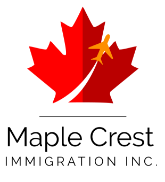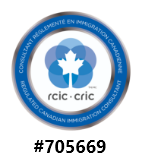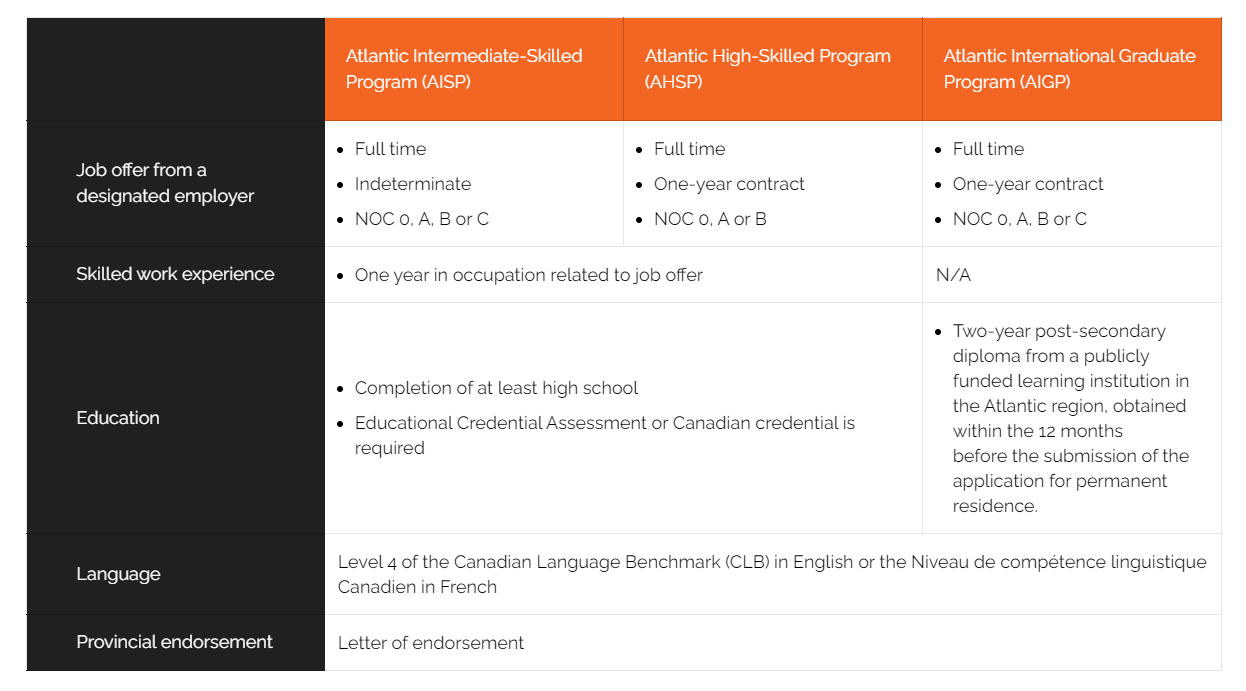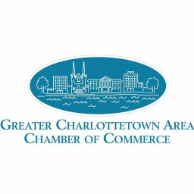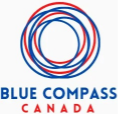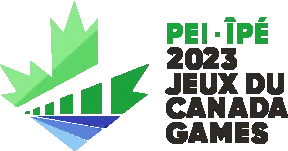Program Overview
EXPRESS ENTRY CANADA
Canada Immigration Consultants
COMPARE ALL EXPRESS ENTRY PROGRAM
Before you compare programs, here are 2 terms you need to know:
Canadian Language Benchmark (CLB)
The CLB is the Canadian standard used to describe, measure, and recognize English language ability of adult immigrants and prospective immigrants who plan to live and work in Canada, or apply for citizenship.
There are 4 language ability tests: Writing, Reading, Listening, Speaking
National Occupation Classification (NOC) code
The NOC is a list of all the occupations in the Canadian labor market. It describes each job according to skill type and skill level. For immigration purposes, these are the main job groups:
- Skill Type 0 (zero): Management jobs
- Skill Level A: Professional jobs that usually call for a degree from a university.
- Skill Level B: Technical jobs and skilled trades that usually call for a college diploma or training as an apprentice.
- Skill Level C: Intermediate jobs that usually call for high school and/or job-specific training.
- Skill Level D: Labour jobs that usually give on-the-job training.
| Eligibility criteria | Canadian Experience Class | Federal Skilled Worker Program | Federal Skilled Trades Program |
|---|---|---|---|
| Language skills |
English or French skills
|
English or French skills
|
English or French skills
|
| Type/Level of work experience |
Canadian experience in 1 of these NOCs:
|
Canadian or foreign experience in 1 of these NOCs:
|
Canadian or foreign experience in a skilled trade under key groups of NOC B |
| Amount of work experience | One year in Canada in the last 3 years (either combination of full-time or part-time work) | One year continuous within the last 10 years (combination of part-time, full-time or more than 1 job in your primary occupation) | Two years within last 5 years (either combination of full-time or part-time work) |
| Job offer | Not required. | Not required. But you can get selection criteria (FSW) points for having a valid job offer. |
Required:
|
| Education | Not required. | Secondary education required. You can get more selection criteria (FSW) points for your post-secondary education. |
Not required. |
What is Express Entry?
Express Entry (EE) is an online immigration application system. It allows people to submit a profile and be considered as a skilled immigrant. Candidates with the highest rankings are invited to apply for permanent residency.
- If you fill out a profile for Express Entry, your application will be ranked according to a points system.
- If you are highly ranked, you will be invited to apply for permanent residence as a skilled immigrant.
- Once you have applied, your PR application will then be processed within the next 6 months.
Which Immigration Programs Does EE Cover?
You must use Express Entry to apply for:
- The Skilled Worker Program
- The Skilled Trades Program
- The Canadian Experience Class
How are EE profile points determined?
Your Express Entry profile will get points based on:
- Your education levels.
- Your abilities in English and/or French (Canada's 2 official languages);
- Your work experience and skills.
- Your age.
- If you have a job offer in Canada; and
- Your spouse's education, language abilities and work experience.
Additional points are also awarded if you have completed a college or university program in Canada or if you have a provincial nomination.
How Does EE Choose People for PR?
- Once you submit a profile, your profile will be entered into a pool(group) of all the people who have currently applied for Express Entry.
- You will then be rankedagainst other people in the pool. Your ranking is based on the number of points you have.
- If you are at the top of the rankings, your profile will be drawn(selected) from the list of applications. You will then get an Invitation to Apply (ITA) for permanent residence as a skilled immigrant.
IRCC has an up-to-date notice about the number of ITAs being issued, and minimum number of points you need to get an ITA. Read more about the Express Entry pool, ranking and draws system.
EXPRESS ENTRY
EXPRESS ENTRY
Express Entry : How it Works

Submit profile in Pool of Candidates if eligible
Express Entry profile is where you submit your information on the basis of your eligibility for
FSW: Federal Skilled Worker
FST: Federal Skilled Trades
CEC: Canadian Experience Class
Based on:
CRS scores
Language
ECA
Work Experience
NOC code etc..
If you’re eligible, you will be accepted into the pool of Express Entry Candidates.

Client Receives ITA(Invitation to Apply)
You will receive an invitation to apply(ITA) based on the Express Entry Federal Draw and your eligibility in STEP ONE.
You will have 90 days to submit your application for permanent residence.
At this stage you should start gathering your documents for submission as per the checklist.

Document Submission & Payment of Fees
Submit all your relevant forms and documents online as per the guidelines provided by the IRCC.
After submission of documents
you will be prompted to pay the Fees.

COPR (Confirmation of Permanent Residence)
If your application is approved, You will get:
Confirmation of Permanent Residence (COPR) a permanent resident visa (if you’re from a country that requires a visa)
Your COPR will have information about who you are, as well as your photograph.
STUDY IN CANADA
Canada is home to one of the best school systems in the world.
From elementary school to universities and colleges, language schools to vocational programs, Canadian schools accommodate students of all interests and backgrounds. Individuals who study in Canada receive quality, internationally-respected educations that prepare them for future professional pursuits. This is combined with tuition fees and living costs that are generally lower than in other developed countries. The number of international students in Canada is over 300,000, a figure that is constantly growing. If you have gained admission to a Canadian educational institution, you may be able to obtain a study permit to study in Canada. Not only that, but education is also a popular pathway to Canadian permanent residence. Read on to learn more.
Education as a pathway to Canadian permanent residence
A Canadian post-secondary education is not only valuable from an educational and career point of view — it is also a popular route to Canadian permanent residence.
While studying in Canada, international students in Canada may also:
- work for up to 20 hours per week while in school, and on a full-time basis during school breaks;
- obtain a Post-Graduation Work Permit for the equivalent duration of the studies once the program is successfully completed, allowing students to remain in Canada for many years before becoming a permanent resident;
- bring an accompanying spouse or common-law partner to Canada on an open full-time work permit, allowing him or her to work for any employer;
- bring accompanying minor children to study in Canada at the same rate that Canadians pay; and
- as mentioned above, become eligible for Canadian permanent residence, either through a Provincial Nominee Program (PNP), through Quebec's immigration system, or through the Express Entry immigration selection system.
Get a study permit faster through the Student Direct Stream
Some international students can get their study permits faster by using the Student Direct Stream.
To be eligible for faster processing through the Student Direct Stream, you must:
- be a legal resident living in:
- China
- India
- Morocco
- Pakistan
- Senegal
- Philippines, or
- Vietnam
- have an acceptance letter from a post-secondary designated learning institution
- prove that you’ve paid the tuition fees for your first year of study
- live outside of Canada when you apply
- have a Guaranteed Investment Certificate (GIC) of C$10,000
- have a Certificatd’acceptation du Québec from the Ministère de l’Immigration, de la Diversité et de l’Inclusion, if you’re planning to study in Quebec
- get a medical exam before you apply (if you need one)
- get a police certificate before you apply (if you need one)
- have a language test result that shows:
- a score of 6.0 or higher in each skill (reading, writing, speaking and listening) on the International English Language Testing System (IELTS), or
- a Test d’évaluation de français (TEF) score that is equal to a Canadian Language Benchmark (CLB) score of at least 7 in each skill (reading, writing, speaking and listening)
You may also need to provide other documents. Make sure you include all the documents required by the visa office that processes your application.
Banks that offer GICs
You can get a GIC from a bank listed on the Canadian Deposit Insurance Company website. Make sure the bank you choose offers a GIC and meets the criteria for the Student Direct Stream.
The following banks offer GICs that meet the criteria:
- Bank of Beijing
- Bank of China
- Bank of Montreal
- Bank of Xian Co. Ltd.
- Canadian Imperial Bank of Commerce (CIBC)
- HSBC Bank of Canada
- ICICI Bank
- Industrial and Commercial Bank of China
- RBC Royal Bank
- SBI Canada Bank
- Scotiabank
Medical exams and police certificates
Depending on where you’re applying from, you may need to get a medical exam or police certificate. To get faster processing through the Student Direct Stream, you must include these with your application (if you need them). If you don’t, we won’t process your application faster.
You may need to get a medical exam if:
- you lived or traveled in certain countries or territories for 6 or more months in the year before you come to Canada, or
- you plan on studying or working in:
- the health field
- primary or secondary education, or
- child or elder care
To get a medical exam, you must see a doctor that has been approved by IRCC.
Find out more about medical exams.
Who needs a police certificate
Your visa office instructions will tell you if you need to get a police certificate. You’ll find these instructions when you select your country of residence below. Make sure you read these instructions before you apply, so you know if you need a police certificate or any other documents to apply.
Find out more about police certificates.
Bring your spouse, partner or child with you to Canada
Your spouse, common-law partner and dependent children may also be able to get faster processing on a:
- visitor visa
- work permit
- study permit
You must complete and submit their applications at the same time as your own. If you don’t, we won’t process their applications faster. When you apply online, select that you have family members coming with you to Canada. This will let you complete their applications with yours.
Study Permit : How it Works
Select a Designate Learning Institution In Canada
Select a DLI as per their eligibility
requirement based on:
Language test
Academics
Medical Exam etc.
Get a document checklist from
the DLI for submitting your application.
Get a Letter Of Acceptance form
the DLI
Apply for TRV and Study Permit.
Apply for Study Permit (Outside Canada)
You should have the following to
apply for your TRV and study permit with the LOA.
Valid Passport or Travel Documents.
Bank Statements/ Bank Endorsement.
Make a GIC from a Canadian affiliated financial institution.
Letter Of Explanation
CAQ ( For Quebec )
Custodian Declaration( Minor Only)
Police Certificate
You might be asked to submit additional documentation.
Apply for Study Permit (Within Canada)
You, your spouse, common-law partner or parent has a valid study or work permit, or a TRP valid for 6 months or more.
You’re a minor child in primary or secondary school
You’re an exchange student or visiting student.
You’re the spouse, common-law partner or dependent child of:
an athlete on a team based in Canada
1. A member of the media
2. A member of the clergy
military personnel on duty in 3.Canada or
4. Accredited foreign representative

Pre Departure Guide
Before you travel to Canada
make sure your DLI is on the
list of those with Approved Covid-19 Readiness plans.
You wont be able to enter Canada
if your DLI isn’t on this list.
Before you arrive read the Pre-Departure Guide.
You need to use the newest version of Arrive Can App before
checking in at the airport or crossing a land border.
CANADA TEMPORARY RESIDENT VISA
Canada Immigration Consultants
What is a temporary resident visa (TRV)?
A temporary resident visa (TRV) is an official counterfoil document issued by a visa office that is placed in a person’s passport to show that they have met the requirements for admission to Canada as a temporary resident.
Holding a TRV does not guarantee entry to Canada. The admission of foreign nationals into Canada as temporary residents is a privilege, not a right.
Visitor visa:
A visitor visa (also called a temporary resident visa) is an official document that we stick in your passport. It shows that you meet the requirements needed to enter Canada.
Most travelers need a visitor visa to travel to Canada. You may also need one if you’re transiting through a Canadian airport on your way to your final destination.
You can apply for a visitor visa online or on paper.
Fees: From: $100
Processing time : Varies by country
Check processing times
You may need to give biometrics with your application. This processing time doesn’t include the time you need to give biometrics.
Most visitors can stay for up to 6 months in Canada.
At the port of entry, the border services officer may allow you to stay for less or more than 6 months. If so, they’ll put the date you need to leave by in your passport. They might also give you a document, called a visitor record, which will show the date you need to leave by.
If you don’t get a stamp in your passport, you can stay for 6 months from the day you entered Canada or until your passport expires, whichever comes first. If you need a stamp, you can ask a border services officer for one. If you arrive at an airport that uses primary inspection kiosks, ask the border officer after you finish at the kiosk.
Make sure you need a visitor visa before you apply
You may need a visitor visa or an Electronic Travel Authorization. The entry document you need depends on:
- the type of travel document you plan to travel with
- the country that issued your travel document
- your nationality
- your method of travel to Canada for this trip
Temporary residents: Super visa
The Minister of Immigration, Refugees and Citizenship and the Minister of Public Safety issued Ministerial Instructions concerning the parents and grandparents extended stay temporary resident visa (TRV) (super visa) and the authorized period of extended stay.
These Ministerial Instructions were issued in accordance with the ministerial authority found in subsection 15(4) of the Immigration and Refugee Protection Act (IRPA) and direct officers to consider issuing to eligible parents and grandparents a multiple-entry TRV for up to 10 years, with the status period extending for up to 2 years on each entry to Canada.
Eligibility criteria and documentary requirements
An applicant is eligible for a super visa if they meet the requirements for temporary residence in Canada as a visitor and provide the additional required documentation. Specifically, they must provide the following:
- proof of their relationship to the child or grandchild (who must be a Canadian citizen or permanent resident), such as:
- a copy of the child’s or grandchild’s birth certificate;
- a copy of the child’s or grandchild’s baptismal certificate; or
- other official document naming the applicant as the parent.
- proof of a medical examination and of being admissible on health grounds;
- satisfactory evidence of private medical insurance from a Canadian insurance company valid for a minimum period of 1 year from the date of entry that (all must apply):
- covers the applicant for health care, hospitalization and repatriation;
- provides a minimum of $100,000 coverage;
- is valid for each entry to Canada and available for review by the examining officer upon request.
- a letter of invitation written and signed by the host child or grandchild promising financial support for the entire duration the applicant intends to stay in Canada;
- evidence of the child’s or grandchild’s means of providing financial support through meeting the low income cut-off (LICO) minimum (a co-signer may be added to meet the LICO minimum) in the form of 1 of the following documents:
- he most recent copy of the notice of assessment (if the child or grandchild does not have a paper copy of their notice of assessment on file, they can view and print their tax returns as well as other personal tax information using the Canada Revenue Agency My Account online service by visiting www.cra.gc.ca/myaccountto register or log in);
- the most recent copy of the child’s or grandchild’s T4 or T1;
- an original letter from the child’s or grandchild’s employer stating their:
- job title;
- job description;
- the child’s or grandchild’s employment insurance pay stubs, including:
- a letter from an accountant confirming the child’s or grandchild’s annual income, if they are self-employed;
- proof of other sources of income (pension statement, investments, etc.).
Note: The proof of financial requirements (LICO) must include details about the number of people in the host’s household and proof of income at the appropriate level for the total number of people, including the visiting parent(s) or grandparent(s). However, it is not meant to cover family members in the visitor’s household who are not visiting, regardless of whether they could eventually be included as dependants in the visitor’s FC4 application.
Temporary Residency : How it Works

Submit profile in pool of candidates if eligible
Lorem ipsum dolor sit amet, consectetur adipiscing elit. Ut elit tellus, luctus nec Lorem ipsum dolor sit amet, consectetur adipiscing elit. Ut elit tellus, luctus nec ullamcorper mattis, pulvinar dapibus leo. mattis, pulvinar dapibus leo. Lorem ipsum dolor sit amet, consectetur adipiscing elit. Ut elit tellus, luctus nec ullamcorper mattis, pulvinar dapibus leo.

Submit profile in pool of candidates if eligible
Lorem ipsum dolor sit amet, consectetur adipiscing elit. Ut elit tellus, luctus nec Lorem ipsum dolor sit amet, consectetur adipiscing elit. Ut elit tellus, luctus nec ullamcorper mattis, pulvinar dapibus leo. mattis, pulvinar dapibus leo. Lorem ipsum dolor sit amet, consectetur adipiscing elit. Ut elit tellus, luctus nec ullamcorper mattis, pulvinar dapibus leo.

Apply for Study Permit (Within Canada)
Lorem ipsum dolor sit amet, consectetur adipiscing elit. Ut elit tellus, luctus nec Lorem ipsum dolor sit amet, consectetur adipiscing elit. Ut elit tellus, luctus nec ullamcorper mattis, pulvinar dapibus leo. mattis, pulvinar dapibus leo. Lorem ipsum dolor sit amet, consectetur adipiscing elit. Ut elit tellus, luctus nec ullamcorper mattis, pulvinar dapibus leo.

Pre Departure Guide
Lorem ipsum dolor sit amet, consectetur adipiscing elit. Ut elit tellus, luctus nec Lorem ipsum dolor sit amet, consectetur adipiscing elit. Ut elit tellus, luctus nec ullamcorper mattis, pulvinar dapibus leo. mattis, pulvinar dapibus leo. Lorem ipsum dolor sit amet, consectetur adipiscing elit. Ut elit tellus, luctus nec ullamcorper mattis, pulvinar dapibus leo.
FAMILY SPONSORSHIP CANADA
Canada Immigration Consultants
Your relatives can live, study and work in Canada if they become permanent residents of Canada. You can sponsor certain relatives to come to Canada if you’re at least 18 years old and a:
- Canadian citizen or
- person registered in Canada as an Indian under the Canadian Indian Act or
- permanent resident of Canada
Most requested
Services and information: Who can apply, how to apply, forms, fees and processing times
- Sponsor your spouse, partner or dependent children
- Sponsor your parents and grandparents
- Sponsor your relatives
- Visit your children or grandchildren
- Sponsor your adopted child
- Information for sponsored spouses or partners
Identify abuse or neglect and get help if you are being abused
Family Sponsorship : How it Works
Start your application process.
To apply to sponsor your spouse,
partner or Child your will do
two applications
1. You must apply to become a
sponsor.
2. Your spouse/partner/
child must apply for permanent residence.
Complete the full application
process with appropriate supporting documents.
Pay your application fees.
You have to pay your fees online
In most cases your fees will include.
1. Processing fees for you.
2. Processing fees for the person
you are sponsoring and their
dependents.
3. The right of permanent residence fee.
4.Biometrics fee
Submit Your Application
Depending on the category of the family sponsorship program you will submit your completed application package to:
CPC Sydney (NS)
or
CPC Mississauga (ON)

Prepare for your Arrival
When your sponsored family members arrive at the port of entry to Canada Or they are already in Canada then you need to show.
Confirmation of Permanent Residence (COPR)
Valid passport or travel document
Permanent resident visa
Quebec Selection Certificate, if they’re going to live in Quebec.
Landing Interview (If In Canada)
PROVINCIAL NOMINEE PROGRAM
Canada Immigration Consultants
How the Provincial Nominee Program (PNP) works
This program is for workers who:
- have the skills, education and work experience to contribute to the economy of a specific province or territory
- want to live in that province, and
- want to become permanent residents of Canada
Each province and territory as its own “streams” (immigration programs that target certain groups) and requirements.
Understand the application options
How you will apply depends on which Provincial Nominee Program stream you’re applying to. You might need to apply using the paper-based process, or by the online process through Express Entry.
As part of the process, you will have to pass a medical exam and get a police check (certificate). Everyone must have these checks, no matter where they plan to live in Canada.
Paper-based process
In the paper-based process:
- You apply to the province or territory for nomination under a non-Express Entry stream.
- You need to meet the eligibility requirements of the province that nominates you.
- Once you have been nominated, you submit a paper application for permanent residence to Immigration, Refugees and Citizenship Canada.
- You have to pass a medical exam and get a police check (certificate). Everyone must have these checks, no matter where you plan to live in Canada.
- Application processing times are longer than through Express Entry.
Express Entry process
In the online Express Entry process, there are 2 ways to apply:
- You contact the province or territory and apply for a nomination under an Express Entry stream.
- If the province or territory agrees to nominate you, you create an Express Entry profile (or update your profile if you already have one) and show you have been nominated.
OR - You create an Express Entry profile and show the provinces and territories you’re interested in.
- If a province or territory sends you a “notification of interest” to your account, you contact them directly.
- You apply to their Express Entry stream:
- If you’re nominated, the province will offer it to you through your account, and you accept it electronically.
In both cases:
- You must meet the eligibility requirements of the province or territory. And,
- You must submit an Express Entry profile and show that you meet the minimum criteria for Express Entry, including being eligible for one of the immigration programs it covers.
- If you are invited to apply, you submit an electronic application to IRCC.
Choose a province or territory
To be nominated by a province or territory, you must follow the instructions on their website and contact them directly:
- Alberta
- British Columbia
- Manitoba
- New Brunswick
- Newfoundland and Labrador
- Northwest Territories
- Nova Scotia
- Ontario
- Prince Edward Island
- Saskatchewan
- Yukon
PROVINCIAL NOMINEE PROGRAM : How it Works
Initial Assessment
Asses the correct PNP option
as per your eligibility based on the following:
Age
Job Offer
National Occupation Code
Skills
Education
Language Abilities
Adaptability
Choose the correct PNP program
You can choose to apply for over 95 PNP programs across Canada from the following provinces:
Alberta
British Columbia
Manitoba
New Brunswick
Newfoundland and Labrador
Northwest Territories
Nova Scotia
Ontario
Prince Edward Island
Saskatchewan
Yukon
Submit Your Nomination Application to the Province
You might need to apply
using the paper-based process,
or by the online process as directed as part of the process.
You will have to pass a mandatory
medical exam and acquire a police clearance certificate / police background check.
If nominated, you will receive an
expression of interest from the province and will be asked to apply for federal application for PR.

Prepare for your Arrival or Landing Interview
To become a permanent resident, you must either present your PR visa at a port of entry (POE) to Canada or
If your are in Canada with a valid status, request an appointment at a local IRCC.
A permanent resident visa holder in the PN class seeking PR status at a POE must establish that they still intend to reside in the province or territory that has nominated them.
CANADA ATLANTIC IMMIGRATION PILOT PROGRAM (AIPP)
Canada Immigration Consultants
The Atlantic Immigration Pilot is a fast-track immigration program that allows employers in Canada's four Atlantic provinces — Nova Scotia, New Brunswick, Newfoundland and Labrador and Prince Edward Island — to hire foreign nationals for jobs they haven’t been able to fill locally.
Introduced in 2017, the federal government and its provincial government partners aim to welcome more than 7,000 newcomers and their families to the Atlantic Canada region by 2021 through the Atlantic Immigration Pilot Program.
Background
The Atlantic Immigration Pilot is designed to welcome additional newcomers to the Atlantic Canada region to fill the needs of local employers and communities.
The three-year pilot program allows designated local employers to identify, recruit and retain global talent. The program also has the goals of supporting population growth, developing a skilled workforce, and increasing employment rates in the region.
The pilot program forms part of an overall Atlantic Growth Strategy that is focused on the following five priority areas:
- skilled workforce and immigration;
- innovation;
- clean growth and climate change;
- trade and investment; and
Atlantic Immigration Pilot Program: How it works
The Atlantic Immigration Pilot is an employer-driven program that facilitates the hiring of foreign workers. All principal applicants arriving in Canada under the pilot program must have a job offer from a designated employer and an individualized settlement plan for themselves and their family.
Once a designated employer finds a candidate who meets their employment needs and the program criteria, that employer will need to first offer them a job. Employers do not need to go through the process of obtaining a Labour Market Impact Assessment (LMIA) under this program.
Once the candidate has accepted the job, the employer will connect the candidate with a designated settlement service provider organization for a needs assessment and to develop a settlement plan. Employers will also support the long-term integration of the new immigrant and his or her family, if applicable, so they can reach the goals of their settlement plan once they arrive in Canada.
Employers that need to fill a job vacancy quickly will have access to a temporary work permit, so that the candidate and his or her family can come to Canada as soon as possible. In order to obtain this work permit, candidates will need:
- a valid job offer;
- a letter from the province; and
- a commitment to apply for permanent residence within 90 days of the temporary work permit application.
Employer designation
Employers that would like to hire skilled immigrants under the pilot program must apply to the province(s) in order to receive designation. Employers with locations in multiple provinces will require a separate designation for each province. Employers must meet certain requirements, including a commitment to support the newcomer and his or her family as they integrate into their new life in Atlantic Canada.
Candidate requirements
The Atlantic Immigration Pilot Program has two programs for skilled workers:
- Atlantic High-Skilled Program (AHSP)
- Atlantic Intermediate-Skilled Program (AISP)
and one program for international student graduates:
- Atlantic International Graduate Program (AIGP)
The work experience, education, and job offer required will depend on whether the individual is applying as a worker or as an international student graduate. The other requirements are the same for both.
Other ways to immigrate to Atlantic Canada
The Atlantic provinces have already been active in immigration over recent years, principally through the Provincial Nominee Programs (PNPs). Through these programs, the provinces have been able to welcome a wide range of skilled workers, graduates who have studied in Canada, and business immigrants such as entrepreneurs. Since 2015, each Atlantic province has created at least one PNP stream aligned with the federal Express Entry system, allowing candidates in the Express Entry pool who are also eligible to immigrate through one of these streams to submit an application to immigrate to the given province.
Currently, the Atlantic PNP options include:
- Nova Scotia Nominee Program (NSNP)
- New Brunswick Provincial Nominee Program (NBPNP)
- Newfoundland And Labrador Provincial Nominee Program (NLPNP)
- Prince Edward Island Provincial Nominee Program (PEI PNP)
See the table below for a review of the requirements.
Atlantic Immigration Pilot Program
Employer Designation
Asses the correct PNP option
as per your eligibility based on the following:
Age
Job Offer
National Occupation Code
Skills
Education
Language Abilities
Adaptability
Client Endorsement
You can choose to apply for over 95 PNP programs across Canada from the following provinces:
Alberta
British Columbia
Manitoba
New Brunswick
Newfoundland and Labrador
Northwest Territories
Nova Scotia
Ontario
Prince Edward Island
Saskatchewan
Yukon
Immigration Application
You might need to apply
using the paper-based process,
or by the online process as directed as part of the process.
You will have to pass a mandatory
medical exam and acquire a police clearance certificate / police background check.
If nominated, you will receive an
expression of interest from the province and will be asked to apply for federal application for PR.

Prepare for your Arrival or Landing Interview
To become a permanent resident, you must either present your PR visa at a port of entry (POE) to Canada or
If your are in Canada with a valid status, request an appointment at a local IRCC.
A permanent resident visa holder in the PN class seeking PR status at a POE must establish that they still intend to reside in the province or territory that has nominated them.
BUSINESS IMMIGRATION:
FEDERAL PROGRAMS:
Canada’s Start-up Visa Program targets immigrant entrepreneurs with the skills and potential to build businesses in Canada that:
- are innovative
- can create jobs for Canadians
- can compete on a global scale
Do you have an innovative business idea? If you can get support for your idea from one of the designated organizations, you may be able to immigrate to Canada.
Have a qualifying business
A qualifying business means you created a business that meets the following conditions.
- At the time you get a commitment from a designated organization:
- each applicant holds 10% or more of the voting rightsattached to all shares of the corporation outstanding at that time (up to 5 people can apply as owners)
AND
-
- applicants and the designated organization jointly hold more than 50% of the total voting rights attached to all shares of the corporation outstanding at that time
- At the time you receive your permanent residence:
- you provide active and ongoing management of this business from within Canada
- an essential part of the operations of the business happens in Canada
- this business is incorporated in Canada
Get a letter of support from a designated organization
You must get a letter of support from a designated organization (a business group that has been approved to invest in or support possible start-ups).
You’ll need to:
- contact the designated organization to find out how to get its support
- convince the organization that you have a business idea that is worth supporting
- get a letter of support from the designated organization
The process to pitch your idea is different for each organization. Each organization has its own requirements. For example, you may be asked to present your business concept in person or submit a detailed business plan.
If you reach an agreement with a designated organization, it will send you a letter of support. You need to include this letter when you submit your application to us. This is the proof you need to show that the venture capital fund, angel investor group, or business incubator is supporting your business idea.
The organization will also send a commitment certificate directly to us. We’ll use both your letter of support and the organization's commitment certificate to assess your application. Please note, we may ask you for more business information in order to take a final decision on your application.
If you don’t include the letter of support or meet any of the other requirements, we’ll refuse your application.
Did you know?
While your application for permanent residence is being processed, you can apply for a temporary work permit to get to Canada and start building your business. See work permits for start-up visa applicants.
Meet the language requirements
The ability to communicate and work in English, French or both languages will help your business succeed in Canada.
You must take a language test from an approved agency and include the results with your application, or we won’t process it.
You must meet the minimum level of the Canadian Language Benchmark (CLB) 5 in either English or French in all of these four areas:
- speaking
- reading
- listening
- writing
Use your test results to find your CLB level.
If you don’t meet the minimum language skills, we’ll refuse your application.
Bring enough money to settle
The Government of Canada does not give financial support to new start-up visa immigrants.
When you apply, you’ll need to give proof that you have the money to support yourself and your dependants after you arrive in Canada. You can’t borrow this money from another person.
The amount you need depends on the size of your family. We update these amounts every year.
| Number of family members |
Funds required (in Canadian dollars) |
| 1 | $12,960 |
| 2 | $16,135 |
| 3 | $19,836 |
| 4 | $24,083 |
| 5 | $27,315 |
| 6 | $30,806 |
| 7 | $34,299 |
| For each additional family member | $3,492 |
PROVINCIAL PROGRAMS
Each province manages its own entrepreneur programs and generally follow a multi-step process to permanent residence. Applicants submit an expression of interest and wait for an invitation to submit an application. Selected candidates submit a complete application which is assessed by the province’s immigration authorities. If approved, candidates are generally required to sign a Performance Agreement and apply for a work permit and enter Canada as a worker at first. If the Performance Agreement requirements are met at the end of a designated period, candidates receive the provincial nomination. Based on that selection or nomination, they may apply to Immigration, Refugees and Citizenship Canada (IRCC) for permanent residence.
What is the Owner-Operator Program?
The owner-operator policy is a work permit issued under the federal Temporary Foreign Worker Program (TFWP). There is no annual quota on the number of work-permits that can be issued.
The latest rules governing new business owners under the TFW program is gaining considerable local and international attention to many foreign business entrepreneurs and investors.
To qualify as an owner-operator, the foreign investor must have:
- Verifiable, transferable management experience.
- Sufficient assets to purchase the targeted business in Canada.
- Sufficient language abilities in either English or French to actively work as a manager in the business.
- Controlling interest in the business: own more than 50% of the shares and cannot be dismissed
- Ownership of shares does not by itself guarantee that a foreign national qualifies as an owner-operator.
The offer of employment must be made to a foreign investor that will be actively engaged in the management of the business. This will be assessed by reviewing the foreign national’s intention to operate the business as well as prior experience in managing or operating a business.
